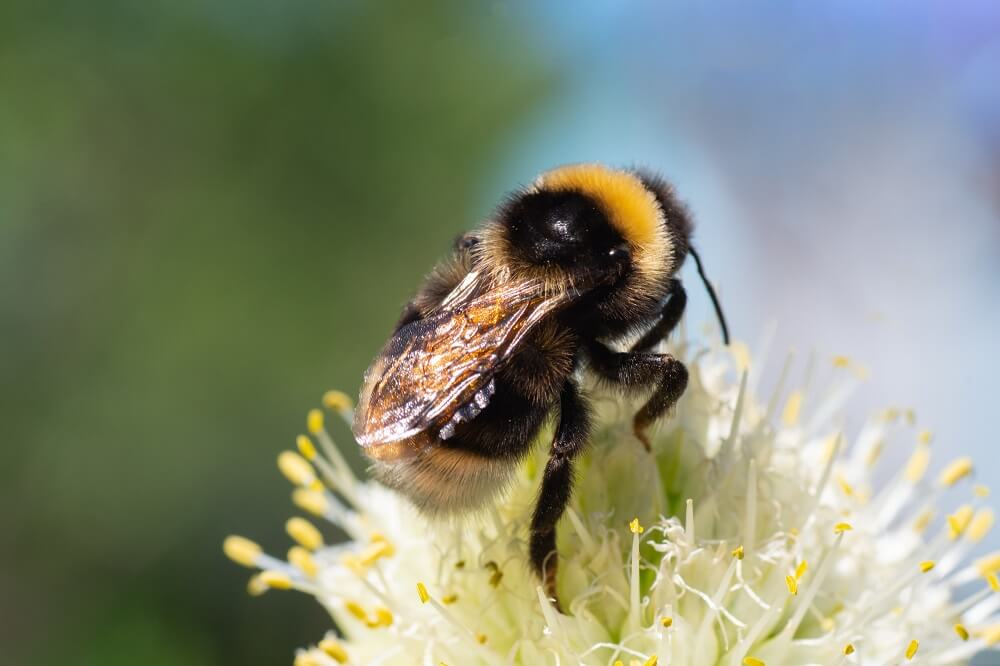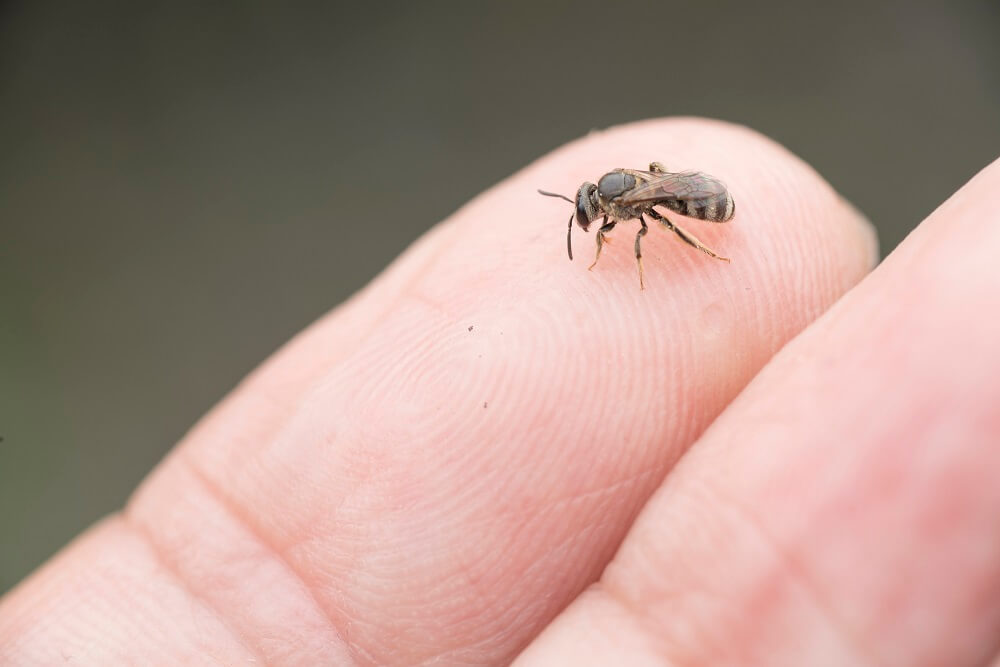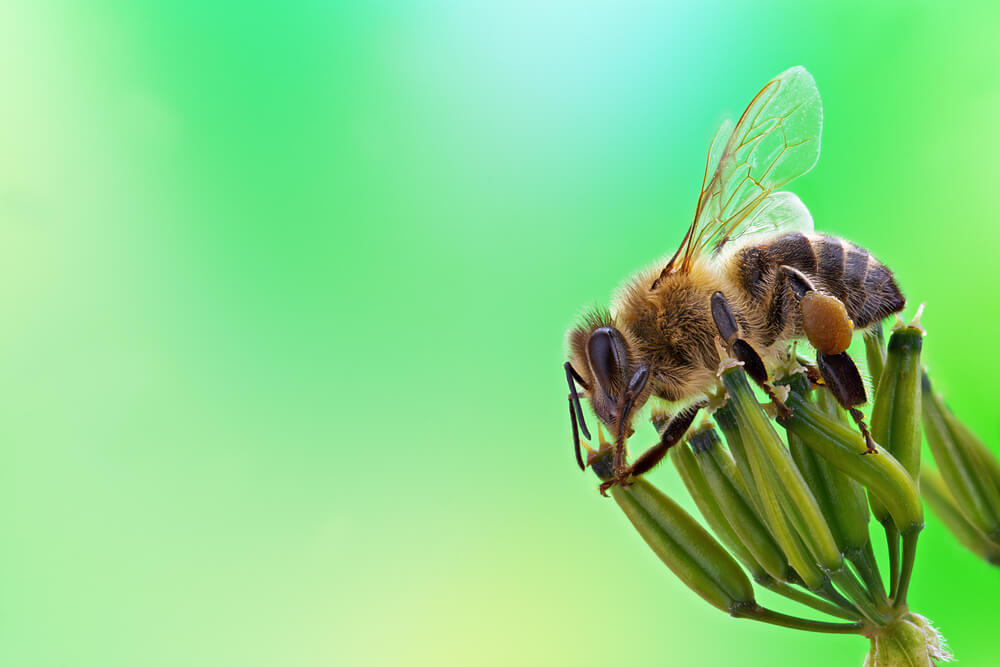In this article:
Do Bumble Bees Make Honey?
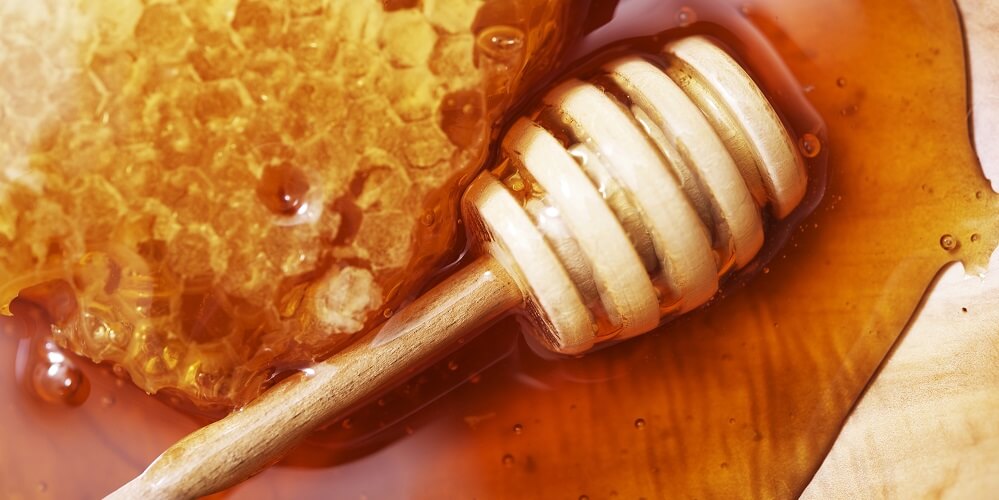
Yes, bumble bees do make honey in very small amounts.(1)
Now you might be wondering:
Why don’t bumble bees make as much honey as honey bees?
The answer is simple.
Bumble bees only eat honey when nectar sources are low. For example, nectar sources can be low when there’s a drought that prevents flowers from blooming.
Honey bees are different.
Honey bees produce large amounts of honey to feed their colony during the winter. During the cold months, flowers aren’t blooming so the honey bees can’t collect food.
And keep in mind:
Honey bees have large colonies ranging from 20,000 to 80,000 bees. Bumble bee colonies are much smaller, only ranging from 20 to 400 bees.
So in a nutshell?
Honey bees have many more mouths to feed, so they need much more honey. And if honey bees don’t have enough honey for winter, they don’t survive.
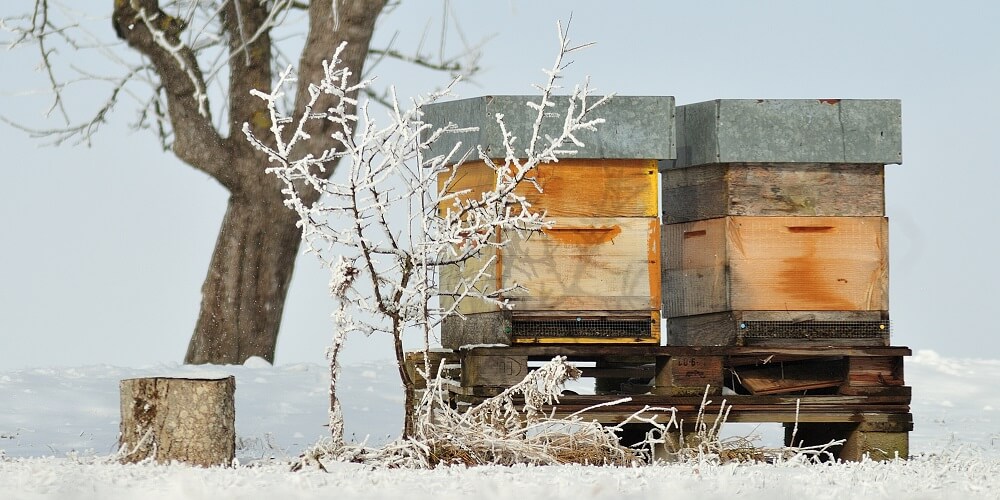
On the other hand, bumble bees don’t eat honey during the winter because they hibernate.
But here’s the thing:
Only the queen bumble bee survives the winter. She goes into hibernation, and the rest of the bumble bee colony dies.
While the bumble bee queen hibernates, she doesn’t eat or work, so she doesn’t need honey. Her metabolism slows down, which allows her to burn little fuel.
And what happens next?
Spring arrives.
Then the queen bumble bee emerges from her nest where she’s been hibernating. She immediately searches for nectar and pollen to replenish her energy.
After that, the queen goes on the search for a suitable nesting spot. Once she finds one, she starts laying eggs to rebuild her colony.
Related: How to Get Rid of Carpenter Bees
How is Bumble Bee Honey Made?
The queen bumble bee is the first to produce honey after her new nest is established.
The queen starts by creating “nectar pots” to store her honey. These pots look like little balls clumped together. Nectar pots are formed from a wax-like secretion produced from the queen’s abdomen.
Here’s what the nectar pots look like:
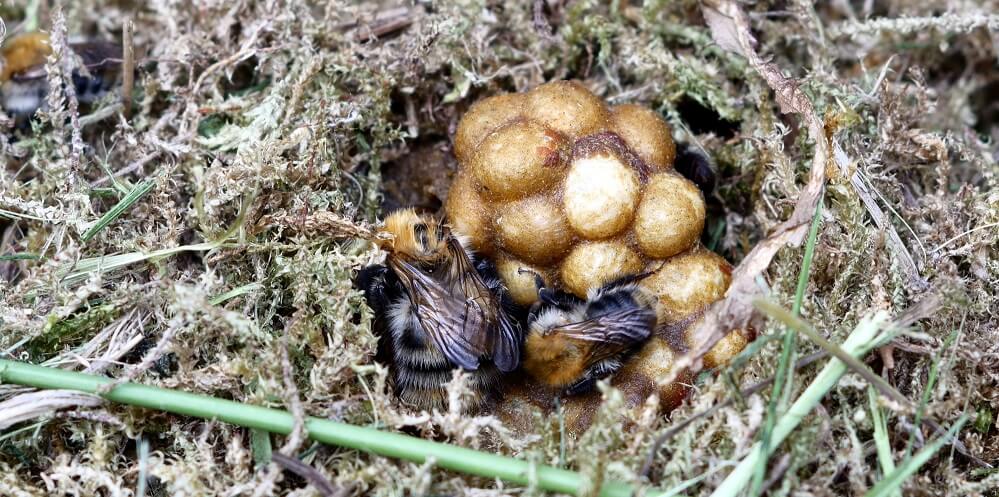
The queen bumble bee will then go out to collect nectar and pollen from flowers. Instead of eating the nectar and pollen, she stores them in her stomach.
Once back at the nest, the queen regurgitates the nectar from her stomach into the nectar pots. She mixes her saliva with the nectar and allows it to dry out to form into honey.
This honey keeps the bumble bee queen alive while she goes about her egg-laying duties.
It takes four to five weeks for the first eggs she lays to become adult bees. Once the worker bees emerge, they take over the hard labor for the queen.
From there, the queen’s job will be to lay eggs and expand the colony, while the worker bees will create nectar pots and store honey.
What Does Bumble Bee Honey Taste Like?
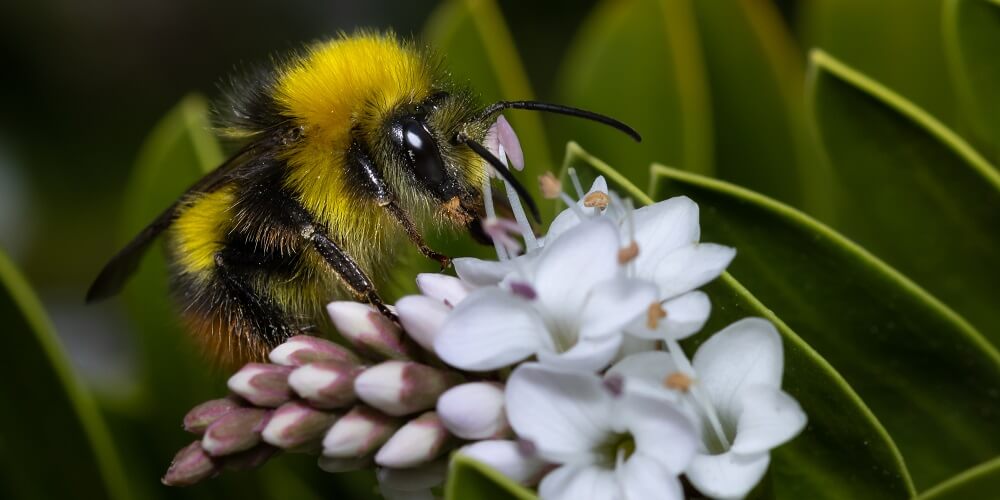
This question is tricky to answer.
How come?
Well, two reasons. For one, there are more than 300 unique flavors of honey in the United States alone.(2)
Secondly, bumble bees don’t produce enough honey for people to eat, so it’s uncommon to actually taste it.
That said, the taste of honey depends on its nectar source. It can be floral, fruity, smoky, nutty, or earthy.
For example, bumble bees that pollinate blueberries will create honey that has hints of blueberry flavor.
And keep in mind:
Bumble bees are essential pollinators of peppers, melons, tomatoes, eggplants, raspberries, cranberries, strawberries, and many other crops.
And, of course, bumble bees pollinate many wildflowers. Wildflower honey is light and fruity, yet it has a complex flavor. The particular wildflowers from which the bumble bees gather nectar will affect the taste.
Related: What Do Bees Eat?
FAQs about “Do bumble bees make honey?”
- What is the difference between a bumble bee and a honey bee?
- Are honey bees the main bees that make honey?
- Do bumble bees make honeycombs?
- Where do bumble bees live?
What is the difference between a bumble bee and a honey bee?
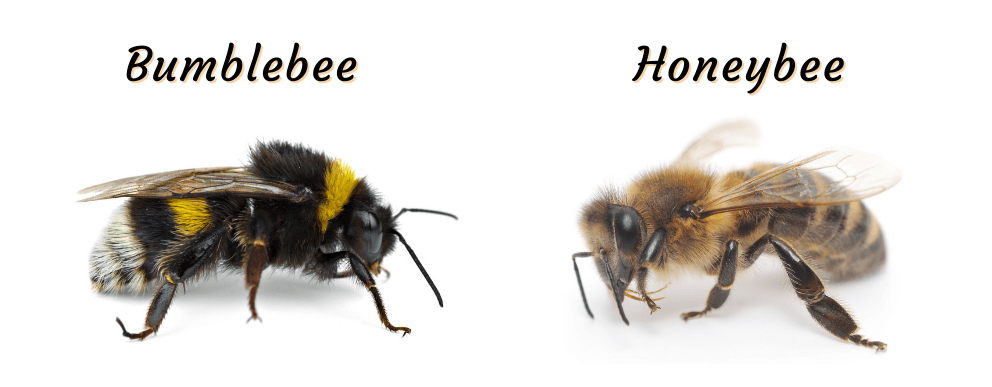
There are a few ways they differ. Let’s start with the basics.
Appearance
Bumble bees are larger and fuzzy, while honey bees are smaller and thinner. Sometimes bee newbies even mistake honey bees for wasps.
Honey bees also have a clear distinction between their head and abdomen, while bumble bees are “all one piece.”
Background
Think about it.
If you’re asked to name a key pollinator in the United States, your first answer would probably be “honey bee.”
But did you know that honey bees aren’t native to the United States?
Honey bees are actually native to Europe. They were introduced to North America in the 1600s.
On the other hand, bumble bees are native to North America.
But this is where the tricky part comes in.
Honey bees are great for pollination. But, they aren’t great for native species like bumble bees.
Unfortunately, increased numbers of honey bee colonies in the US have led to more competition between honey bees and native bees. As a result, this puts even more pressure on bumble bees that are already declining.
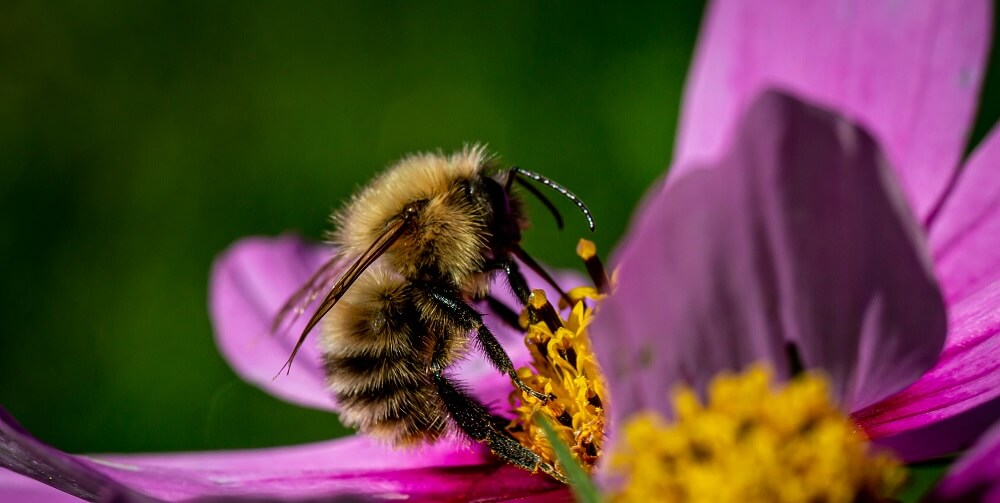
You see, honey bees have large colonies between 20,000 to 80,000 bees in a single hive. Honey bees often take over flowers to feed their large colonies, resulting in exploitative competition.
Exploitative competition happens when one species consumes all of a resource rather than leaving enough for others.
And when there isn’t enough food to go around?
You guessed it.
Native bee populations decline. In fact, there are now petitions for the American bumble bee to be placed under the Endangered Species Act before they face extinction.(3)
This is why many North Americans are turning away from keeping honey bees and helping native bees like bumblebees, carpenter bees, and sweat bees instead.
Queens and mating
As summer draws to a close, bumble bee colonies produce new queens.
The bumble bee queen generally mates only with one male, unlike the honey bee queen, who can mate with as many as forty males.
After the bumble bee queen has mated, she eats plenty of nectar to prepare for hibernation. She hibernates underground and if she survives the winter, will emerge in the spring to establish her own colony.
Nesting Habits
Bumble bee queens must start from the ground up. When they first come out of hibernation, the bumble bee queen doesn’t have the help of worker bees. She is solely responsible for creating a nest.
The first step is for the queen to look for a suitable nesting location. Most bumble bee species nest underground in old rodent dens, but some also use birdhouses or woodpiles.
The bumble bee queen begins laying her first eggs once she has found a suitable nest. These eggs hatch into worker bees who work for the queen.
The queen bumble bee stops forging for food once she has enough worker bees. She then focuses on laying eggs and growing the colony while the worker bees handle other tasks.
The nest of a bumble bee is determined by the species. The majority of bumble bee colonies range from 50 to 400 bees. However, some bumble bee nests have been documented as small as 20 bees and as big as 1,700 bees.
Bumble bee nests are much smaller than honey bee hives, holding 20,000 to 80,000 honey bees.
Strong honey bee hives can survive the winter. The queen has her worker bees to help her from the beginning, unlike queen bumble bees.
Also, honey bees typically build their hives above ground.
Lifespan
Honey bees live longer than bumble bees. In the winter, they huddle together to keep themselves and their queen warm. A honey bee queen has an average lifespan of two to three years.
Bumble bee queens live about one year, and she’s the only bee in her nest to survive winter. Once the warmer months appear, worker bumble bees only live about four weeks.
Stinging
Bumble bees have smooth stingers that allow them to sting multiple times without dying.
Honey bees have barbed stingers that get hooked into your skin. The stinger is attached to the honey bee’s internal organs, so when it’s pulled out, it essentially rips out the honey bee’s abdomen. This explains why honey bees die after stinging.
—> Go back to the “Do bumble bees make honey?” FAQs
More to Explore:
Are honey bees the main bees that make honey?
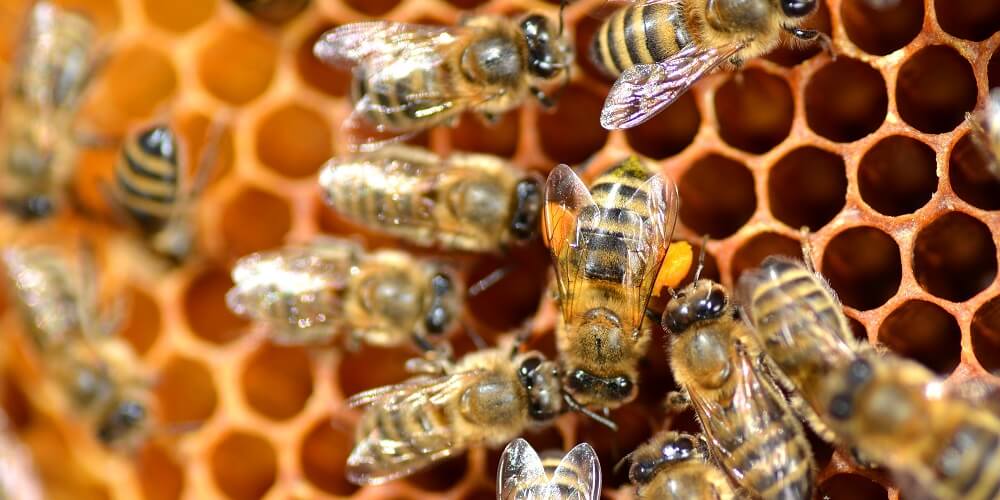
“Do all bees make honey?” is something we get asked a lot.
The answer?
No, not all bees make honey. The honey you buy from the store comes from honey bees.
Then the question becomes:
Do bumble bees make honey like honey bees? Why do bumble bees not make honey like honey bees?
Bumble bees do make honey, but only in small amounts. Since their honey production is much less than honey bees, it’s not something we eat.
On the other hand, honey bees can produce 30 to 100 pounds of honey per year and sometimes more, depending on the health and strength of the hive.
Beekeepers will typically harvest honey bee honey once or twice per year. They’ll also make sure to leave plenty of honey for the beehive, so they’ll have enough to eat during the winter. Leaving enough honey for a hive is crucial because they can’t survive the winter without it.
—> Go back to the “Do bumble bees make honey?” FAQs
More to Explore:
Do bumble bees make honeycombs?
Well, first, let’s briefly define honeycombs.
Honeycombs are a natural product produced by honey bees to store honey, pollen, and baby bees. Honeycomb is made from beeswax and is formed into hexagonal cells.
With that in mind, bumble bees don’t make honeycombs.
Instead, the small amount of honey they produce is stored in nectar pots. These nectar pots are made of wax secreted from the bumble bee’s abdomen.
—> Go back to the “Do bumble bees make honey?” FAQs
More to Explore:
Where do bumble bees live?
Some bumble bees nest underground, in areas such as old rodent burrows, gardens, under sheds, and in compost heaps. Others nest above ground in thick grass, tree hollows, or bird boxes.
